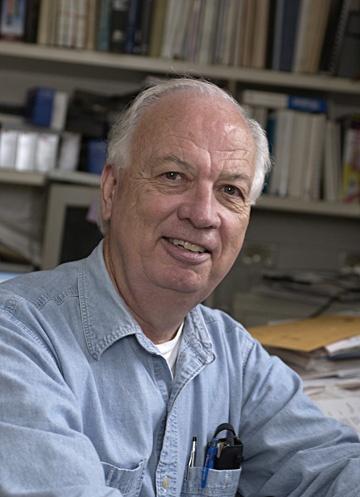
Research Topics
Physiological, Biochemical, and Molecular Genetic Events of Recognition and Resolution of RNA/DNA Hybrids
RNA associated to DNA, either as RNA/DNA duplex or incorporated into the chromosome, is a hazard that needs prompt removal. RNases H are the only enzymes that can hydrolyze both types of RNA structures, and consequently are essential to avoid genome instability. We have been involved in describing the chemical composition of RNases H and how they function. More recently, our attention has been directed to defining how RNases H participate in cellular events. Recently, numerous studies from many labs have highlighted the importance of preventing/removing RNA/DNA hybrids to maintain genome integrity. It has become evident that DNAs containing RNA, either hybridized or covalently bound, are more common than previously thought. Replicating DNA polymerases incorporate ribonucleotides at a high rate, and transcription associated R-loops – that consist of one of the DNA strands annealed to the mRNA while the other DNA strand remains in single stranded form - are created under many cellular conditions. Stable R-loops constitute a challenge to genome stability because they are a barrier to transcription and replication fork progression, stalling replication and causing fork collapse. Also the single strand DNA displaced in the R-loop is very sensitive to breakage and triggers the DNA damage response, leading to double strand breaks (DSB) that are repaired by the homologous recombination pathway.
Biography
Dr. Robert Crouch received his Ph.D. from the Biochemistry Division of the Chemistry Department, University of Illinois in 1968. He spent 10 months as an Instructor at the University of Bergen, Norway, before assuming a postdoctoral position with Dr.Raymond Gestland at Cold Spring Harbor Laboratory. In 1971, Dr. Crouch took a position as Senior Staff Fellow in NICHD where he is now Head of the Section on Formation of RNA, DDB, NICHD.
Selected Publications
- Cerritelli SM, Frolova EG, Feng C, Grinberg A, Love PE, Crouch RJ. Failure to produce mitochondrial DNA results in embryonic lethality in Rnaseh1 null mice. Mol Cell. 2003;11(3):807-15.
- Uehara R, Cerritelli SM, Hasin N, Sakhuja K, London M, Iranzo J, Chon H, Grinberg A, Crouch RJ. Two RNase H2 Mutants with Differential rNMP Processing Activity Reveal a Threshold of Ribonucleotide Tolerance for Embryonic Development. Cell Rep. 2018;25(5):1135-1145.e5.
- Akman G, Desai R, Bailey LJ, Yasukawa T, Dalla Rosa I, Durigon R, Holmes JB, Moss CF, Mennuni M, Houlden H, Crouch RJ, Hanna MG, Pitceathly RD, Spinazzola A, Holt IJ. Pathological ribonuclease H1 causes R-loop depletion and aberrant DNA segregation in mitochondria. Proc Natl Acad Sci U S A. 2016;113(30):E4276-85.
- Pokatayev V, Hasin N, Chon H, Cerritelli SM, Sakhuja K, Ward JM, Morris HD, Yan N, Crouch RJ. RNase H2 catalytic core Aicardi-Goutières syndrome-related mutant invokes cGAS-STING innate immune-sensing pathway in mice. J Exp Med. 2016;213(3):329-36.
- Chon H, Sparks JL, Rychlik M, Nowotny M, Burgers PM, Crouch RJ, Cerritelli SM. RNase H2 roles in genome integrity revealed by unlinking its activities. Nucleic Acids Res. 2013;41(5):3130-43.
Related Scientific Focus Areas



Molecular Biology and Biochemistry
View additional Principal Investigators in Molecular Biology and Biochemistry


This page was last updated on Saturday, November 11, 2023